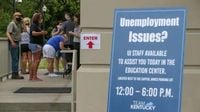The U.S. labor market, long seen as a bedrock of economic strength, is now under intense scrutiny after a government report revealed that job growth over the past year was vastly overstated. On September 9, 2025, the Bureau of Labor Statistics (BLS) issued a preliminary benchmark revision showing that employers added 911,000 fewer jobs between April 2024 and March 2025 than previously reported—a staggering adjustment that has sent ripples through financial markets, policy circles, and kitchen tables alike, according to reporting from Reuters and HR Brew.
This downward revision marks the largest such adjustment since 2000, surpassing last year’s hefty markdown of 818,000 jobs, which itself was later fine-tuned to a still-painful 598,000. Economists had braced for a significant correction, projecting a drop anywhere from 600,000 to a million jobs. The final tally for the 12 months ending March 2025 stands at a loss of 598,000 jobs, as confirmed by both Reuters and The New York Post.
What’s driving this dramatic reassessment? The BLS’s annual revisions compare its monthly survey data—drawn from roughly 120,000 to 121,000 businesses and government agencies and covering about 631,000 worksites—with more comprehensive, albeit less timely, state unemployment insurance tax records. These records cover nearly 95% of all U.S. employment, capturing a fuller picture than the monthly snapshot, which can miss new businesses or those that quietly shuttered their doors. As The New York Post highlighted, this year’s revision is a clear sign that the labor market was much weaker than anyone knew, even before the effects of President Donald Trump’s sweeping import tariffs or the latest waves of automation and artificial intelligence adoption took hold.
For workers and policymakers alike, the news is sobering. Monthly nonfarm payroll growth, once thought to average 147,000 positions, actually limped along at just 70,000 to 71,000 jobs a month—a figure well below the threshold needed to keep unemployment steady. In fact, recent months have been even bleaker: average payroll growth for June, July, and August 2025 was a mere 29,000 jobs, far below what’s required to maintain labor market equilibrium.
The pain hasn’t been spread evenly across the economy. Leisure and hospitality, a sector battered by pandemic aftershocks and shifting consumer habits, saw the steepest downward revision, losing 176,000 jobs compared to earlier estimates. Professional and business services followed close behind, down 158,000 jobs, while retail trade shed 126,200. The construction sector, heavily reliant on immigrant labor, lost 7,000 jobs in August 2025 alone, marking its third consecutive month of decline. Even the federal government wasn’t spared, trimming 15,000 positions last month as scrutiny mounted from both President Trump and Elon Musk’s Department of Government Efficiency, according to Reuters.
Some bright spots managed to shine through the gloom. Transportation and warehousing, along with utilities, actually saw small gains—adding 6,600 and 3,700 jobs, respectively, as reported by HR Brew. These sectors bucked the broader trend, perhaps reflecting shifting supply chain dynamics and infrastructure investments.
But the reasons behind the data shift aren’t just technical. Policy changes, especially those targeting immigration, have played a significant role. Ron Hetrick, principal economist at Lightcast, explained that the BLS’s annual revisions are influenced by how immigration is factored into employment counts. State unemployment insurance records only include workers eligible for benefits, excluding undocumented workers who, while on payrolls and paying taxes, don’t qualify for unemployment. As the Trump administration revoked the legal status of thousands of immigrants, many were removed from payroll counts. Hetrick observed, “There were more people working on payrolls and that is what the survey is measuring. Now they aren’t. These people drove growth and were initially counted, and now they are leaving payrolls.”
Automation and artificial intelligence have also been quietly transforming the employment landscape. Bill Adams, chief economist for Comerica Bank, told The New York Post, “The revised data demonstrate more clearly that AI is automating away jobs in the tech sector. The downward revision hit employment in information industries especially hard—this is the category that includes many internet businesses.”
The political fallout was swift and fierce. After steep downward revisions to May and June payrolls wiped out 258,000 jobs, President Trump dismissed BLS Commissioner Erika McEntarfer in August, alleging—without evidence—that she falsified data. He has since nominated E.J. Antoni, a commentator and economist at the conservative Heritage Foundation, as her replacement. Antoni has previously advocated for releasing the jobs report on a quarterly, rather than monthly, basis, claiming this would improve accuracy. This proposal has drawn skepticism from economists and business leaders, who argue that timely, even if imperfect, data is crucial for decision-making. Kory Kantenga, head of economics for the Americas at LinkedIn, summed up the prevailing sentiment: “If I had to choose between less accurate information today to guide a decision, versus more accurate data four months from now—after the decision is made—I’d always choose the former.”
Elise Gould, a senior economist at the Economic Policy Institute, cautioned against politicizing the BLS, telling Reuters, “Any political retaliation due to today’s release will harm the ability for BLS to provide timely and unbiased statistics.” The National Association for Business Economics echoed this call, urging “policymakers, business leaders, and the economics community to stand with BLS and ensure that America’s statistics remain accurate, independent, and trusted worldwide.”
Financial markets, for their part, seemed to take the news in stride—at least initially. All three major indexes closed at record highs, with the Dow Jones Industrial Average up nearly 200 points and the S&P 500 and Nasdaq each gaining about 0.3% to 0.4%. But beneath the surface, anxiety is mounting. Chris Zaccarelli, chief investment officer for Northlight Asset Management, warned, “The jobs picture keeps deteriorating and while that should make it easier for the Fed to cut rates this fall, it could also throw some cold water on the recent rally. Worse still, if the CPI shows a worsening trend of higher inflation on Thursday then the market will begin worrying about stagflation.”
For President Trump and his administration, the revision was seen as vindication of their long-standing critiques of both government data and the Federal Reserve, according to Bloomberg’s Washington Edition. Yet, the broader economic community remains focused on the future. The BLS will issue its final benchmark revision in February 2026, alongside the January employment report, which could bring further adjustments and, perhaps, more surprises.
As the dust settles, one thing is clear: the labor market’s underlying health is more fragile than many realized. The latest revisions don’t just rewrite the past—they reshape the outlook for workers, businesses, and policymakers grappling with a fast-changing economy.



